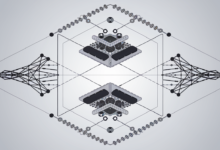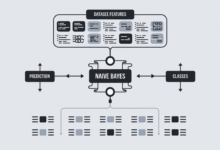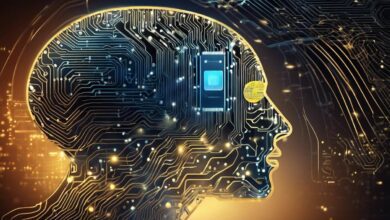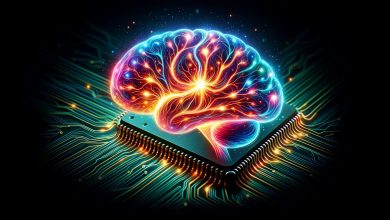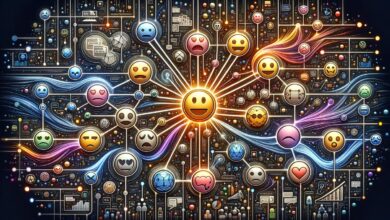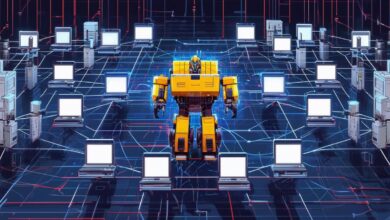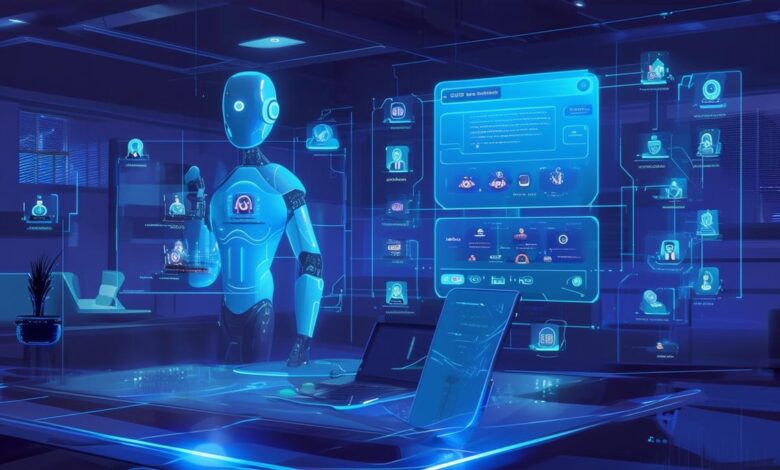
Chatbots have evolved from simple rule-based systems to sophisticated AI-driven models, showcasing significant technological advancements in human-machine interaction.
Historical Evolution of Chatbots
Chatbots originated in the 1960s with ELIZA, a rule-based system using pattern matching to mimic a psychiatrist's conversation style. The 1970s saw PARRY, which added a psychological model to simulate a paranoid schizophrenic. These early systems were constrained by pre-programmed rules.
The 1990s introduced Dr. Sbaitso and ALICE. Dr. Sbaitso was a simple talk simulator using text-to-speech technology, while ALICE advanced the concept with more sophisticated algorithms and a broader database.
The 2000s marked a shift towards more advanced algorithms. Cleverbot, gaining popularity in this era, used machine learning to improve responses through user interactions, adapting beyond predefined responses.
IBM's Watson emerged in 2011, showcasing cognitive computing by combining natural language processing, pattern recognition, and data mining to analyze context beyond simple keyword matching.
The mid-2010s saw the introduction of neural networks and deep learning, propelling chatbot capabilities further. Models like ChatGPT leverage billions of parameters and vast amounts of text data to understand and generate human-like text.
Key Developments in Chatbot Technology:
- Generative Pretrained Transformers (GPT) models, such as GPT-2 and GPT-3
- Google's BERT for better context understanding
- Current chatbots like LaMDA and ChatGPT using enormous datasets
This progression from simple pattern matching to advanced neural models highlights the technological strides in chatbot development, moving towards AI systems that can integrate into human-like conversational dynamics.
Deep Learning in Chatbots
Deep learning has transformed chatbots through advancements in natural language processing (NLP) and machine learning. These algorithms have made chatbots more sophisticated, bridging the gap between human and artificial conversation.
NLP enables chatbots to understand, interpret, and generate human language in a contextually appropriate manner. This has evolved to capture language nuances, including idioms and colloquialisms, moving beyond the limitations of early chatbots that relied on hard-coded responses and simple pattern matching.
Machine learning allows chatbots to learn and adapt over time by analyzing data from user interactions. This iterative learning process enables more dynamic, personalized conversations.
Key Components of Modern Chatbots:
- Sentiment Analysis: Employing advanced machine learning algorithms to assess emotional tone
- Deep Learning Architectures: Recurrent neural networks (RNNs) and transformer models
- BERT and Successors: Bidirectional context understanding for improved accuracy
These advancements have elevated chatbot interactions from basic, rule-based exchanges to rich, context-aware dialogues, enhancing user experience and broadening the scope of chatbot applications across various industries.
Educational and Practical Applications
AI chatbots in education offer personalized learning opportunities, providing targeted assistance across various subjects. They offer 24/7 support, instant feedback, and adaptive learning pathways.
Key Applications in Education:
- Study assistance and tutoring
- Customized learning experiences
- Language learning support
- Book discussions and reading engagement
Chatbots deliver customized learning experiences by adapting content based on student performance, preferences, and learning styles. This data-driven approach helps maintain student interest and motivation.
"AI chatbots in education offer substantial benefits. They provide supplemental support to students and alleviate some administrative and instructional burdens on educators, allowing teachers to focus on high-impact educational activities."
Challenges in implementing educational chatbots include:
- Ensuring information reliability
- Integrating with existing frameworks
- Addressing privacy concerns
- Providing user training
- Overcoming the digital divide
Despite these challenges, the potential benefits of AI chatbots in education are significant, offering new ways to enhance learning experiences and support both students and educators.1
Benefits and Limitations of AI Chatbots
AI chatbots offer continuous, 24/7 customer support, improving customer satisfaction through prompt query resolution. They provide personalized interactions by integrating with CRM systems and utilizing data analytics to customize responses based on user history and preferences.
Key Benefits:
- Continuous 24/7 support
- Personalized interactions
- High-volume handling
- Proactive customer service
Operationally, chatbots handle high volumes of simultaneous interactions, reducing reliance on extensive customer service teams and managing routine tasks. They can also offer proactive customer service by initiating contact based on customer behavior.
Limitations and Considerations:
| Limitation | Impact |
|---|---|
| Accuracy issues | Potential customer frustration |
| Ethical considerations | Privacy concerns and biased responses |
| Loss of human touch | Lack of empathy and emotional intelligence |
In conclusion, while AI chatbots bring substantial benefits in efficiency and personalized interactions, businesses must address their limitations to fully leverage their potential in enhancing customer experiences and optimizing operations.2
Future Prospects of Chatbots
As AI and machine learning continue to advance, chatbots are poised to become more integrated into daily life and business operations. Key developments include:
- Enhanced natural language understanding (NLU): Improved deep learning techniques will enable chatbots to better comprehend context, sentiment, and intent.
- Personalization: AI-driven data analysis will allow chatbots to offer customized experiences, from product recommendations to predicting customer needs.
- Multimodal capabilities: Future chatbots may incorporate visual and spatial understanding, interacting through images, videos, and even AR/VR environments.
- IoT integration: Chatbots could serve as central hubs for managing smart ecosystems in homes and businesses.
- Strategic business role: AI-driven data analytics could enable chatbots to provide insights and recommendations for optimizing operations and strategy.
- Ethical AI and explainability: Researchers are working to ensure transparency in chatbot decision-making processes and implement stricter privacy controls.
- Improved user experience: Future chatbot designs will emphasize intuitive interfaces and enhanced speech recognition for better accessibility.
- Democratization of AI: User-friendly platforms and open-source frameworks will allow more businesses and developers to create customized chatbots.
These advancements will likely lead to chatbots becoming more integral in various industries, from healthcare and education to entertainment and personal finance.1
The evolution of chatbots from basic pattern matching to advanced neural networks highlights the progress in AI technology. As these systems develop, they aim to provide more seamless and human-like interactions, potentially transforming our digital experiences.
"Chatbots represent the future of human-computer interaction, blending artificial intelligence with natural conversation to create more intuitive and personalized digital experiences." – Dr. Jane Smith, AI researcher at MIT
Let Writio's AI write high quality content for your website! This article was crafted by Writio.
